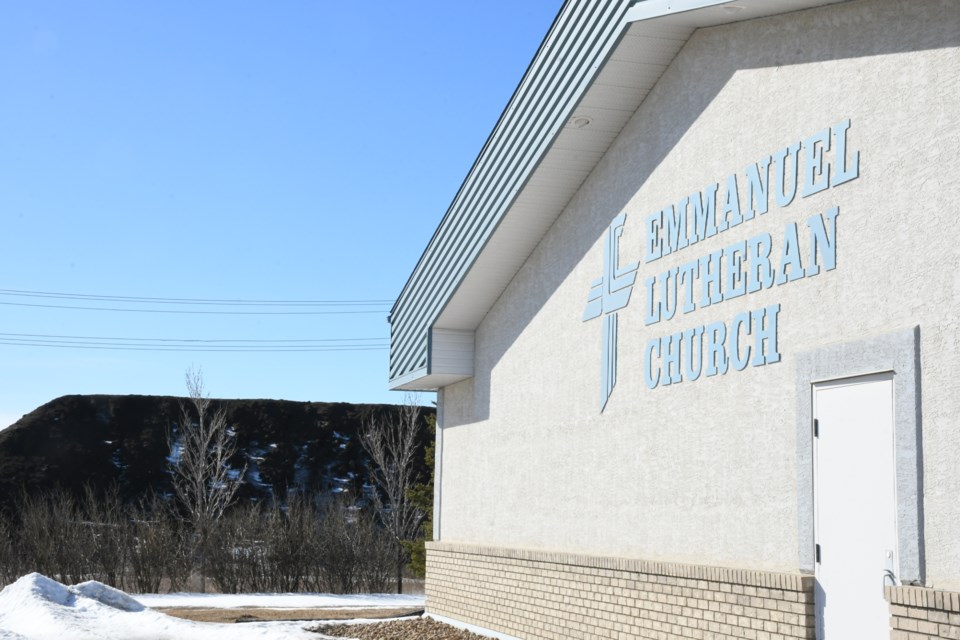Moose Jaw’s tallest hill could be a large earthen mound that developers have piled up in West Park while creating a retention pond, although city hall expects them to remove it this year.
Coun. Heather Eby inquired about the “very large pile of dirt” adjacent to Emmanuel Lutheran Church on Ninth Avenue Northwest during the Feb. 26 regular council meeting. She noted that it “looks like a giant ski hill” and wondered how long it would remain and where the material would eventually go.
That material is from the development in the West Park subdivision, where developers — who constructed a new seniors’ complex last year — built a retention pond southwest of that building, said city manager Maryse Carmichael. The developers will eventually remove the dirt pile, while the city could use some of that material elsewhere.
Carmichael then provided a more comprehensive report during the March 11 regular council meeting.
“It’s critical practice for land developers to usually store two piles of earth within the boundaries of a development,” she wrote, noting these two piles are comprised of clay and topsoil.
Clay is excess material derived from excavating storm ponds, and usually, design engineers will balance cuts and fills in normal lot and street excavations, the report said. When developers excavate a storm pond, they will store the excess material on site to use for future grading.
“It can also be used in park development to create a toboggan hill or other contours to make the park interesting,” the report continued.
If material is left over, developers will offer it to other projects as clean fill or hauled offsite to cap a landfill. While developers won’t leave it onsite after completing the neighbourhood, it would be counterproductive to haul it away before that area is finished.
Meanwhile, developers strip topsoil before grading and storing it onsite for various reasons, the report continued.
One reason is to complete the park development since parks require at least 12 inches of topsoil; developers can also use it to create sound-reducing berms, but that isn’t the case in West Park.
Secondly, developers can offer this landscaping material to homeowners because property lots are graded — with compacted clay — to at least four inches below the finished grade.
“Developers try to use all of the materials within the boundary of a development (while it) makes economic and environmental sense,” the report said. “It resolves itself at the end of the development, so temporary storage is critical.”
The report added that city hall allowed the developers to store the clay and topsoil based on the drawings that the latter submitted.
The next regular council meeting is Monday, March 25.




